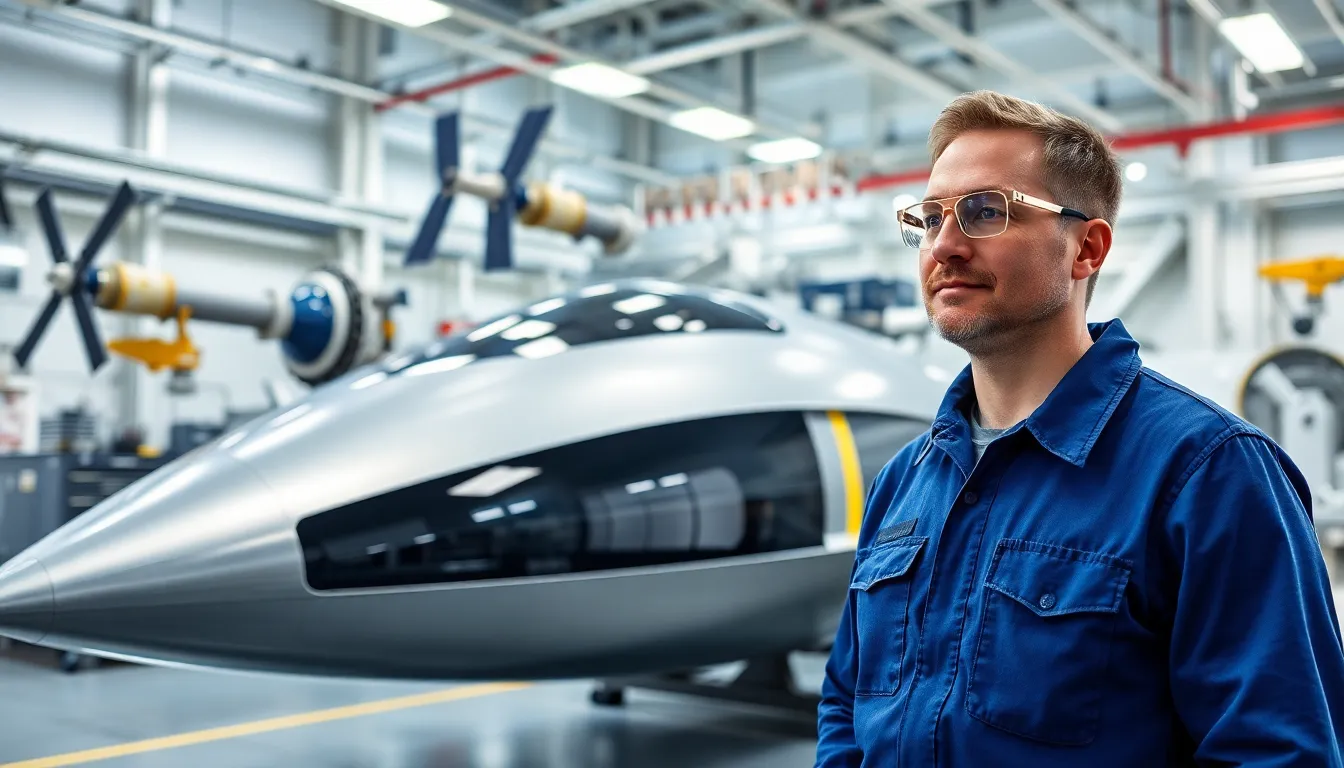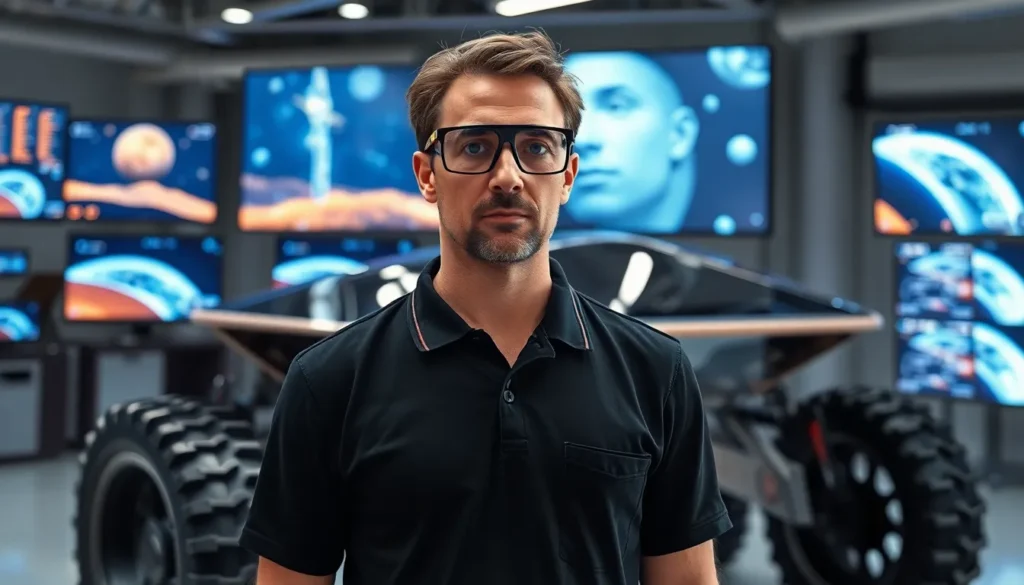Table of Contents
ToggleIn a universe filled with stars and endless possibilities, space technology is the rocket fuel propelling humanity into the final frontier. From satellite communications that keep us connected to the latest Mars rover sending selfies from the Red Planet, space tech isn’t just for astronauts anymore. It’s a cosmic playground where innovation meets imagination, and every breakthrough is a giant leap for mankind—or at least a really cool GIF.
Overview of Space Technology
Space technology encompasses a range of innovations that facilitate the exploration and utilization of outer space. Satellite communications revolutionized global communication by enabling real-time data transmission across vast distances. Scientific instruments, such as telescopes and spectrometers, allow researchers to analyze celestial bodies, contributing to our understanding of the universe.
Mars rovers, like Perseverance and Curiosity, explore the Martian surface, capturing essential data about its geology and climate. These robotic explorers demonstrate advanced engineering, including autonomous navigation and data collection capabilities. Countries worldwide invest in space exploration programs, recognizing its potential to drive scientific advancement and technological progress.
Humanity’s endeavors extend to spacecraft development for missions beyond Earth orbit. The Artemis program aims to facilitate human exploration of the Moon, paving the way for future missions to Mars. Innovations in propulsion systems, materials science, and sustainable life support systems contribute to overcoming the challenges of deep-space travel.
Emerging technologies, such as reusable launch vehicles, bolster the cost-effectiveness of space missions. Companies like SpaceX exemplify this trend by developing rockets that return to Earth for reuse, significantly reducing launch expenses. Collaborative international projects promote knowledge sharing and foster partnerships among nations pursuing shared goals in space exploration.
Overall, space technology serves as a driving force behind exploration, inspires innovation, and fosters international collaboration. As advances continue to unfold, the potential for new discoveries grows exponentially, reinforcing the importance of investing in this dynamic field.
Key Innovations in Space Technology

Space technology continually evolves, driving exploration and innovation. Various key innovations have emerged, each contributing to humanity’s understanding and capabilities in space.
Satellite Technology
Satellite technology plays a critical role in global communications and Earth observation. Communication satellites enable instant connectivity across continents, enhancing services like internet access and broadcasting. Earth observation satellites provide invaluable data for climate monitoring, disaster management, and agricultural planning. Companies like OneWeb and Starlink aim to create global internet access, expanding digital services worldwide. Additionally, remote sensing satellites help scientists study natural resources and environmental changes, supporting sustainable development efforts.
Propulsion Systems
Innovative propulsion systems are essential for advancing space travel. Recent advancements in chemical propulsion significantly increase spacecraft speed and efficiency. Ion thrusters, for example, offer propulsion options with higher efficiency and reduced fuel consumption. SpaceX’s Raptor engine employs a full-flow staged combustion cycle, maximizing thrust while minimizing emissions. Additionally, research into nuclear thermal propulsion could enable faster missions to Mars and beyond. Developing these systems enhances mission capabilities and reduces costs associated with deep-space exploration.
Spacecraft Design
Spacecraft design focuses on enhancing safety and performance for various missions. Engineers incorporate advanced materials to create lightweight, durable structures capable of withstanding harsh space environments. For instance, the James Webb Space Telescope features a sunshield that protects its instruments from solar radiation. Modular designs enable efficient repairs and upgrades, ensuring missions can adapt to changing requirements. Furthermore, autonomous navigation systems allow spacecraft to make real-time adjustments, improving mission outcomes and reducing reliance on ground control. These design elements significantly influence exploration efficiency and success.
Applications of Space Technology
Space technology has various applications that significantly impact everyday life and scientific advancement.
Communication and Navigation
Satellite technology plays a crucial role in global communication and navigation systems. It supports telecommunication services, television broadcasting, and internet connectivity. Companies like OneWeb and Starlink are expanding digital services, making broadband more accessible worldwide. Navigation systems like GPS rely on a network of satellites, enabling accurate positioning and tracking for millions of users. Enhanced communication abilities also facilitate data sharing in real-time, improving emergency response efforts and disaster management. The integration of satellite data into smartphones further exemplifies its everyday utility.
Earth Observation
Earth observation satellites provide vital data for monitoring climate change, natural resources, and agricultural productivity. They capture high-resolution images of the planet’s surface, allowing researchers to analyze environmental changes. Organizations utilize this information for urban planning, disaster relief, and environmental protection. Remote sensing enables tracking of deforestation and wildlife habitats, contributing to conservation efforts. Additionally, meteorological satellites enhance weather forecasting, allowing communities to prepare for severe weather events. Overall, these capabilities support informed decision-making and resource management on a global scale.
Scientific Research
Scientific research benefits immensely from space technology. Instruments aboard satellites and space probes collect data about celestial bodies and phenomena. Telescopes in orbit, such as the Hubble Space Telescope, provide unprecedented views of distant galaxies, aiding astronomers in understanding the universe. Mars rovers like Perseverance analyze the Martian surface, searching for signs of past life and geological activity. The International Space Station serves as a unique laboratory for experiments in microgravity, advancing knowledge in various fields, including biology and materials science. These research initiatives deepen humanity’s understanding of the cosmos and our planet’s place within it.
Future Trends in Space Technology
Innovations in space technology continuously shape the future of exploration and commercial endeavors. The next wave of advancements promises to transform how humanity interacts with the cosmos.
Commercial Spaceflight
Commercial spaceflight expands significantly, driven by companies like SpaceX and Blue Origin. These organizations make space accessible to non-professionals and researchers by offering suborbital and orbital flights. Investors see potential in this sector, promoting advancements like space tourism and satellite launches. Additionally, partnerships between private firms and government agencies increase investment and resource sharing, accelerating technology development. The competition encourages innovation, leading to lower costs and enhanced reliability for space missions.
Space Exploration Missions
Space exploration missions evolve rapidly, focusing on destinations such as Mars and beyond. NASA’s Artemis program aims to establish a sustainable lunar presence, laying the groundwork for future Mars missions. Investors back these initiatives, recognizing their potential for scientific discovery and technological breakthroughs. Uncrewed missions increase, enabling extensive data collection and preparation for crewed missions. Enhanced propulsion systems, such as ion thrusters and nuclear thermal engines, boost efficiency and speed for deeper space travel. Collaborative international projects facilitate knowledge sharing, enabling diverse perspectives in addressing challenges posed by long-duration missions.
Space technology continues to reshape humanity’s understanding of the universe and its potential. As innovations emerge, they not only enhance exploration but also improve everyday life through advancements in communication and navigation. The collaborative efforts of nations and private companies are driving progress, making space more accessible than ever.
Future endeavors in space exploration promise to unlock new frontiers and inspire generations to come. With each technological leap, the possibilities expand, paving the way for discoveries that could redefine life on Earth and beyond. The journey into the cosmos is just beginning, and its impact will resonate for years to come.





